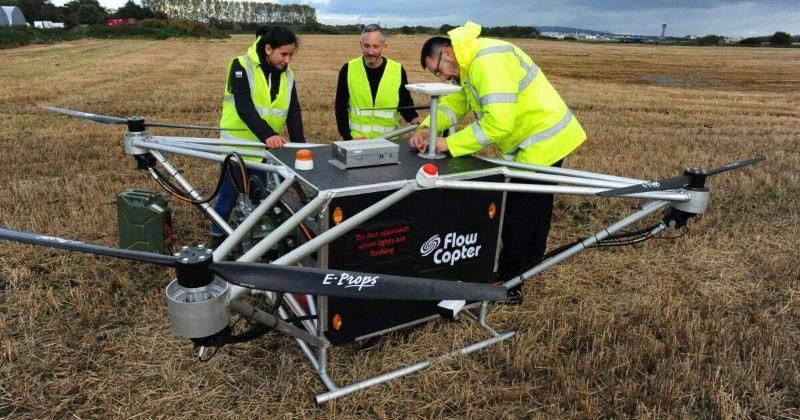
A company from Edinburgh Scotland is building the worlds first hydraulic drone to address the shortcomings of conventional drones such as range and payload weight capacity.
The unmanned aerial vehicle (UAV) was inspired by the U.K.S Royal National Lifeboat Institutions (RNLI) building a companion drone for offshore lifeboats challenge. At the moment flowcopter is the only UAV that is able to meet the extreme range and payload requirements in the offshore environment.
We have no doubts that when the day comes electric motors and batteries will be able to power all the vehicles, ranging from cars, planes, and even massive container ships, but at the moment fossil fuels and combustion engines are more powerful, endurant, and way lighter than electrical power sources.
The perks of the “flowcopter”
The reason we don’t see quadcopters powered by fossil fuels is that they can not be precisely controlled like the ones with electric motors as they are not able to adjust the rotation speed of their rotors as accurately and as fast as needed. The lack of precise control does not make a difference with airplanes as the motor’s only job is to provide thrust in a direction, but in drones or multi-copters precision is constantly needed because the wind gusts keep disrupting the balance of the UAVs and of course the constant struggle of the gravitational pull.
Flowcopter uses aviation-certified combustion engines instead of low-density lithium batteries to generate more power to increase its payload capacity and flight range while keeping the vehicle stable in the air.
The certified engines of Flowcopter drive Digital Displacement pumps, which distribute and regulate hydraulic flow to keep the drone in balance and run the 96 kW (129 hp) powered hydraulic motors of the aerial device.
No electricity needed
The company claims that no electric drone comes even close to Flowcopter in terms of range and payload capacity. The estimated flight duration of Flowcopter is up to six hours with a range of up to 560 miles, and it can carry a payload of 330 pounds for short-range missions.
If the company succeeds in making the flowcopter fully functional and capable of short-range cargo deliveries, we won’t have to deal with the traffic.

